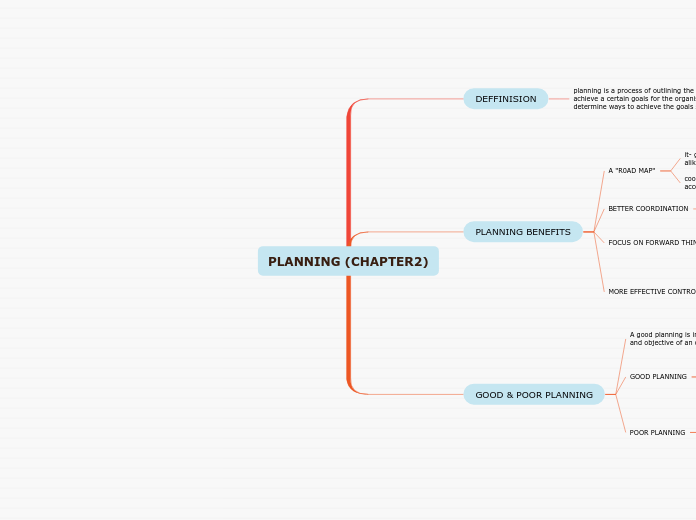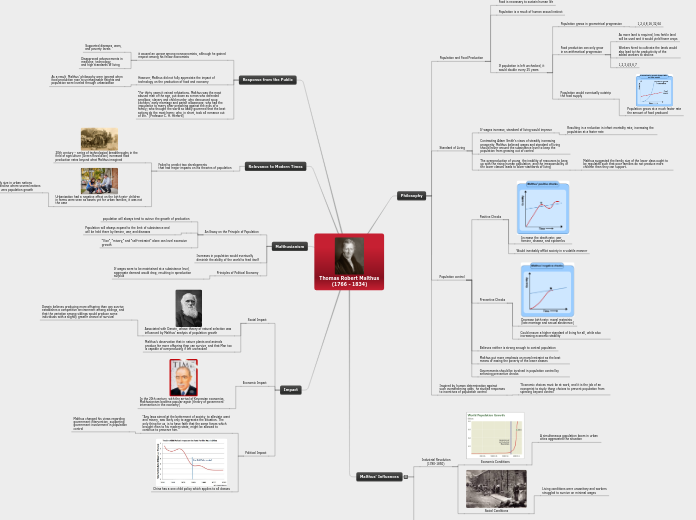PLANNING (CHAPTER2)
To name your story, you have to think about the overall message and what you want your audience to understand from the story. Also, make it relevant and easy to remember.
GOOD & POOR PLANNING
The ending of a story is essential. We all know that if the ending is weak, what happened before loses its importance. So make it unpredictable, but fair. A resolved ending answers all the questions and ties up any loose threads from the plot.
POOR PLANNING
This is the closure section of the story.
See examples of possible outcomes below:
- all problems have been solved
- it's clear how each one of your characters ends up
- your main character is transformed by the challenge
many risk that can be the main reason of why some organization are fail to achive the successful at the end of their result
Example is failure to achieve survive , to reach desired of the objective , to operate within the budget and to maximize the use if tge resources
Some of the organization can be fail too according to the poor planning
Try answering these questions to come up with a closure:
- Have all the problems been solved?
- Is there a clear picture of what happens with each character in the story?
- Has the challenge transformed your main character?
- How do the characters feel in the end?
GOOD PLANNING
This is the moment when the main character surpasses the last obstacle and finally faces their greatest challenge.
The climax usually follows one of these patterns:
- realization
- resolution
- choice
Type in your answer.
can help to solve a problem in a management untill success
One of the way that we can see either it is a good planning or not which is good planning are the main reason to get the best productivity
A good planning is important to get a good manangement and objective of an organization
PLANNING BENEFITS
The middle of the story is where you add layers of complications that will lead to the end. Reveal more about the character's journey. Did their personality go through changes? How did they overcome the challenges? And as you build up the story’s central conflict, make it more personal to that character. Also, from the middle act, you have to lead into the final act.
MORE EFFECTIVE CONTROL SYSTEM
CONTROLLING
significant deviations are identified
performance is compare against rthe goal
goals and plams are develope
FOCUS ON FORWARD THINKING
There wouldn't be any tension and excitement in your story if there weren't any obstacles in your character's way.
clarifies the consequences of action managers.
reduce uncertainly by forcing managers to look ahead, condinder the impact of change
A story is nothing more than a character overcoming a series of difficulties to reach the desired goal. Obstacles usually create suspense and conflict. In overcoming obstacles, there is growth: weak becomes strong; hatred turns into love; sadness into happiness; wrong into right; lies into truth; or evil becomes good.
See a few examples below:
- stopping a meteor
- finding a killer
- finding love
BETTER COORDINATION
Your character(s) need(s) motivation in order to solve the challenge(s).
time wasted, resources and redudancy can be minimized.
Why does your character need to confront this challenge? What does he/she expect to accomplish by solving it?
See a few examples:
- will marry in 3 days
- can fix the mistakes of the past
when work activities are cooerdinated around establisah plans
A "R0AD MAP"
Each story has a main character and that character usually needs to solve a problem or challenge. The character's challenge is the one that creates tension throughout the story.
cooperate with each other and do what it takes to accomplish those goal
Type in any other challenges which other characters in the story need to face.
it- gives direction to managers and non- managers alike. employers can coordinate their activities
In most stories, there are 3 challenges. The number 3 is a mystical number symbolizing completeness. Try to come up with interesting challenges with which your character needs to struggle.
See a few examples below:
- turns into a werewolf at night
- is sent back in time
DEFFINISION
In the beginning of the story (or the exposition), you will need to introduce the setting and characters. You might also want to introduce the main conflict. This part of the story is important because it gives the reader necessary background information and maybe even a first insight into a character’s personality.
planning is a process of outlining the activities to achieve a certain goals for the organisation. It also determine ways to achieve the goals smoothly.
Characters are essential to a good story. Usually, the protagonist(s) is/are the most affected by the plot. Introduce a character by focusing on their actions, interests, and occupation, as the physical appearance doesn't make a difference in most cases.
PLANNING
Type in the name of your character.
Covered long and short term
Formally prepared
Factual
Logical
Add other properties of the character.
Realistic
Add other qualities/attributes of the character.










